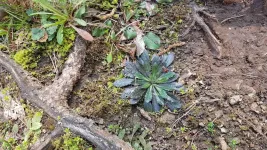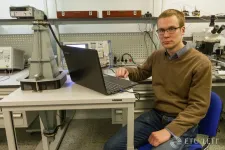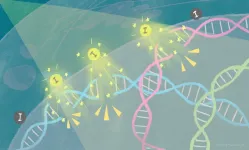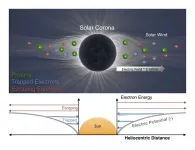Genome studies: More is not always better
2021-07-14
(Press-News.org) What the fruit fly is to zoologists, the thale cress is to botanists. The widespread herb with the botanical name Arabidopsis thaliana serves them as a model organism from which knowledge can be gained for other plants. It is therefore extremely well researched - also genetically. For example, it is now known that the genetic material of Arabidopsis thaliana (its genome) comprises around 125 million base pairs. It's like having a Lego manual in front of you that is 125 million letters long and contains everything you need to know to build an Arabidopsis plant.
Similar to humans, different Arabidopsis specimens are generally not genetically identical. If you were to compare the construction manual of all plants of this species, you would encounter differences in about 10 million places, experts estimate. "We have now taken a closer look at three million of these variable sites in the genome," explains Arthur Korte, junior professor of Evolutionary Genomics at the University of Würzburg. "And we did so in nearly 900 Arabidopsis plants from very different locations across Europe, from southern Spain to central Sweden."
For botanists, the variations in the genome are very interesting. because they are responsible for differences between individual Arabidopsis plants. Some plants can, for example, cope better with drought, while others are more resistant to frost. "To some extent, these are traits that we would like to introduce into our crop plants," Korte explains. "But to do that, we first need to know which genetic differences are related to which traits in the plant."
Too much heterogeneity is harmful
Classically, scientists use a method known by the abbreviation "GWAS" (genome-wide association study) for this purpose. They examine the genomes of thousands of plants and look for changes in the genetic blueprint that are particularly frequently associated with certain traits, such as better drought resistance. The more specimens one compares in this way, the more such links between genotype (the individual genetic blueprint) and phenotype (the properties of the plant in question) should stand out.
"But we were able to show in our study that this is not necessarily the case," Korte emphasizes. "Instead, it's sometimes better to limit yourself to fewer specimens from a defined local area." The reason: plant populations that grow in locations with very different conditions often differ significantly in their genomes. This heterogeneity might lead to the scenario that a trait such as drought resistance has very different genetic origins in different locations. "Therefore, if a GWAS includes many plants with very high genetic heterogeneity, it may miss important associations between genotype and phenotype," Korte says.
In their study, the scientists were indeed able to demonstrate this effect. On the one hand, they conducted a GWAS of all nearly 900 plants. In addition, they also examined only subpopulations - for example, those Arabidopsis specimens that had been collected on the southern Iberian Peninsula. "In doing so, we found genetic correlations that were not seen in the overall population because they had become too diluted there," says Korte. "These results show that valuable new insights can be gained from smaller, more genetically homogeneous samples." That applies not only to plants, by the way, but just as much to GWAS in humans.
Local adaptations are often based on changes in gene networks
The study also provides interesting insights into the evolution of new traits: genetic adaptations to local conditions (for example, to a particularly dry environment) are usually not based on the fact that a single "drought gene" has changed and thus become more effective. Instead, they often involve regulator genes, which in turn intervene entire networks of traits. "These regulators could then provide a better fine-tuning of already existing metabolic pathways," says Korte.
This finding is also relevant for breeding new varieties. In the past, it was often thought that one simply had to cross a certain gene into a breeding line in order to obtain the desired trait there. In the meantime, however, it has become increasingly clear that networks of many different factor have to be considered. "We are now learning better and better how to identify such networks," says Korte. "With this knowledge, it might be possible in the future to adapt today's crops to new challenges such as climate change. "
INFORMATION:
[Attachments] See images for this press release:

ELSE PRESS RELEASES FROM THIS DATE:
2021-07-14
Dr. Iair Arcavi, a Tel Aviv University researcher at the Raymond and Beverly Sackler Faculty of Exact Sciences, participated in a study that discovered a new type of stellar explosion - an electron-capture supernova. While they have been theorized for 40 years, real-world examples have been elusive. Such supernovas arise from the explosions of stars 8-9 times the mass of the sun. The discovery also sheds new light on the thousand-year mystery of the supernova from A.D. 1054 that was seen by ancient astronomers, before eventually becoming the Crab Nebula, that we know today.
A supernova is the explosion of a star following a ...
2021-07-14
A new study co-authored by the UBC Sauder School of Business has found that when senior managers mistreat workers, middle managers often attempt to quietly smooth things over.
Robin Hood was known for stealing from the rich and giving to the poor -- but while he may have lived in Sherwood Forest centuries ago, he would have fit right in as a middle manager in today's business world.
Studies have shown that when employees are mistreated by senior leaders, employees can often get back at them by doing things like gossiping, stealing office supplies or calling in sick when they're well. But according to new research from UBC Sauder, middle managers also get in on the act, and attempt to address workplace injustices by secretly helping out their subordinates ...
2021-07-14
Kamil Gareev, Associate Professor at ETU "LETI," justified the prospects of using magnetotactic bacteria to treat malignant tumors.
LETI researchers identified the main properties of magnetotactic bacteria and described the possibilities of their application in medicine. The results obtained will help create theranostic agents in neurooncology and cardioprotection. The results of the joint study with colleagues from St. Petersburg State University, RAS Institute of Cytology, and RAS Institute of Biotechnology were published as an overview article in the journal Magnetochemistry.
Magnetotactic bacteria (MTB) are distinguished by their ability to synthesize magnetosomes, special cellular organelles in which magnetite biomineralization occurs. Thanks ...
2021-07-14
Autistic people need extra help in going green say researchers behind a new study which argues for a more inclusive environmental agenda.
Climate action movements are gathering extraordinary pace due to international campaigners like Greta Thunberg, whose autism has been well documented. Being autistic has been used to explain and celebrate, but also diminish and denigrate, her activism.
Thunberg, for example, reports that being autistic is a psychological "gift" and "superpower" that underpins her environmental attitudes and behaviours. This has fuelled speculation - in the media and the general public - that autistic ...
2021-07-14
DALLAS, July 14, 2021 -- Heart failure hospitalizations and costs related to methamphetamine use jumped sharply over a decade in California, according to new research published today in Circulation: Cardiovascular Quality and Outcomes, an American Heart Association journal.
"Our study results should bring urgent attention to this insidious yet rapidly growing form of severe heart failure - methamphetamine-related heart failure, which is taking the lives of young people, straining health care resources and threatening to spread like wildfire in California, the West and to the rest of the nation," ...
2021-07-14
PHOENIX, Ariz. -- July 14, 2021 -- The results of a study by an international scientific team co-led by the Translational Genomics Research Institute (TGen), an affiliate of City of Hope, suggest that -- like pouring water atop a wellhead before pumping -- the airway cells of patients with chronic lung diseases are "primed" for infection by the COVID-19 virus, resulting in more severe symptoms, poorer outcomes and a greater likelihood of death.
The study -- published today in Nature Communications -- details the genetic changes caused by chronic lung disease in the molecular makeup of a variety of cells, including the epithelial cells that line the lung and airways. The ...
2021-07-14
The extraordinary ability of animals to rapidly evolve in response to predators has been demonstrated via genetic sequencing of a waterflea population across nearly two decades.
In a new study, published in Nature Communications, scientists at the Universities of Birmingham in the UK, the Katholieke Universiteit Leuven in Belgium, and the Leibniz Institute for Freshwater Ecology and Inland Fisheries (IGB), Berlin, were able to identify more than 300 genes that vary in the genome of the waterflea.
These genes, which account for about about 3 per cent of all sequenced waterflea genes, ...
2021-07-14
Cancer cell death is triggered within three days when X-rays are shone onto tumor tissue containing iodine-carrying nanoparticles. The iodine releases electrons that break the tumor's DNA, leading to cell death. The findings, by scientists at Kyoto University's Institute for Integrated Cell-Material Sciences (iCeMS) and colleagues in Japan and the US, were published in the journal Scientific Reports.
"Exposing a metal to light leads to the release of electrons, a phenomenon called the photoelectric effect. An explanation of this phenomenon by Albert Einstein in 1905 heralded the birth of quantum physics," says iCeMS molecular biologist Fuyuhiko Tamanoi, who led the study. "Our research provides ...
2021-07-14
July 14, 2021 (Toronto) A new study from the World Health Organization's (WHO) International Agency for Research on Cancer (IARC), published in the journal Lancet Oncology, has found an association between alcohol and a substantially higher risk of several forms of cancer, including breast, colon, and oral cancers. Increased risk was evident even among light to moderate drinkers (up to two drinks a day), who represented 1 in 7 of all new cancers in 2020 and more than 100,000 cases worldwide.
In Canada, alcohol use was linked to 7,000 new cases of cancer in 2020, including 24 per cent of breast cancer cases, 20 per cent of colon cancers, 15 per cent of rectal cancers, and 13 per cent of oral and liver cancers.
"All ...
2021-07-14
As the Parker Solar Probe ventures closer to the sun, we are learning new things about our home star.
In a new study, physicists led by the University of Iowa report the first definitive measurements of the sun's electric field, and how the electric field interacts with the solar wind, the fast-flowing current of charged particles that can affect activities on Earth, from satellites to telecommunications.
The physicists calculated the distribution of electrons within the sun's electric field, a feat made possible by the fact that the Parker Solar Probe jetted within 0.1 astronomical units (AU), or a mere 9 million miles, from the sun--closer than any spacecraft has approached. From the electrons' distribution, the physicists ...
LAST 30 PRESS RELEASES:
[Press-News.org] Genome studies: More is not always better





